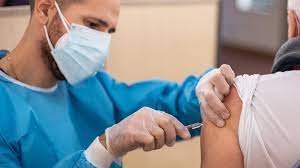The Covid-19 tide table

By Dra Marta Illueca La Prensa Jun.13
In Panama, we have the great blessing of being a double coastal country. The vast majority of the population has easy access to beaches for healthy fun, but they are not without their dangers and risks to life. For this reason, we rely on our beach culture and also on the weather experience. The latter informs us of the behavior pattern of this giant of our planet, which bathes us and offers us hospitality in its waters, in addition to all due precautions.
The oceans have a consistent movement, caused by the gravitational force between our planet and, the moon. The tides are the result of this interaction and are recurring, predictable, and variable. Those who regularly use the beaches have a habit of observing the intensity of the waves, their height, and speed, and others check the tide tables. It is easy to bathe and swim at low tide, as it is much safer than venturing out to compete with the waves at high tide. It is not pleasant to be “rolled” by a wave. The World Health Organization tabulated 236,000 drownings in 2019. Globally, deaths from drowning are the third leading cause of death due to accidental trauma and are the fifth leading cause of death in pediatric age, more frequent in the first 4 years of life. It is logical, then, that the fear of drowning induces us to check the tide tables or at least observe the rhythm of the waves before entering the sea. And just as bathers rely on the aforementioned tide tables, we also have technologies that protect us from the most dangerous waves, such as breakwaters and lifeguards.
This analogy of the tides helps me to address a worrying topic, which is the reason for countless questions regarding Covid-19. Are we going to have a third wave? A fourth? Will it be worse than the previous one? Will the quarantine and the collapse of the health system return? I suggest leaning on the science of epidemiology to understand that epidemics have waves and tidal patterns that can be analyzed and dealt with. Covid-19 is still a new disease. We do not have the benefit of time to draw a curve, long enough, to predict the periodicity of the spikes. And it is also too early to see the effect of vaccination on the observed peaks. The most essential thing is to understand that more waves could occur until a couple of scenarios occur. Either herd immunity is achieved or we achieve such a degree of vaccination that the transmissibility of the coronavirus and its health impact weakens like a simple “stride”, with few complicated cases and few deaths.
To face the waves of Covid-19, we have two main strategies, one at the community level and the other at the personal level. Mass vaccination is the community breakwater and the decision to get vaccinated is your personal lifesaver. Neither strategy is perfect. Thus, there will always be drowning, for not knowing how to swim or for not wanting to use life jackets or even for being unwary. And then, of course, there will be bad weather and changes in the weather beyond our control.
The same will be with Covid-19. Not getting vaccinated is like “riding” with the waves of a choppy sea, without a life jacket. The “waves” of the virus will continue and our responsibility is one of mutual solidarity, to support vaccination and biosecurity measures. Health authorities must be left to monitor each new wave or rebound while monitoring community transmission and new variants of the virus. It is up to us to lead a responsible life, avoid “high tides” and put on our life jackets.
The author is a doctor, scientific researcher and theologian





